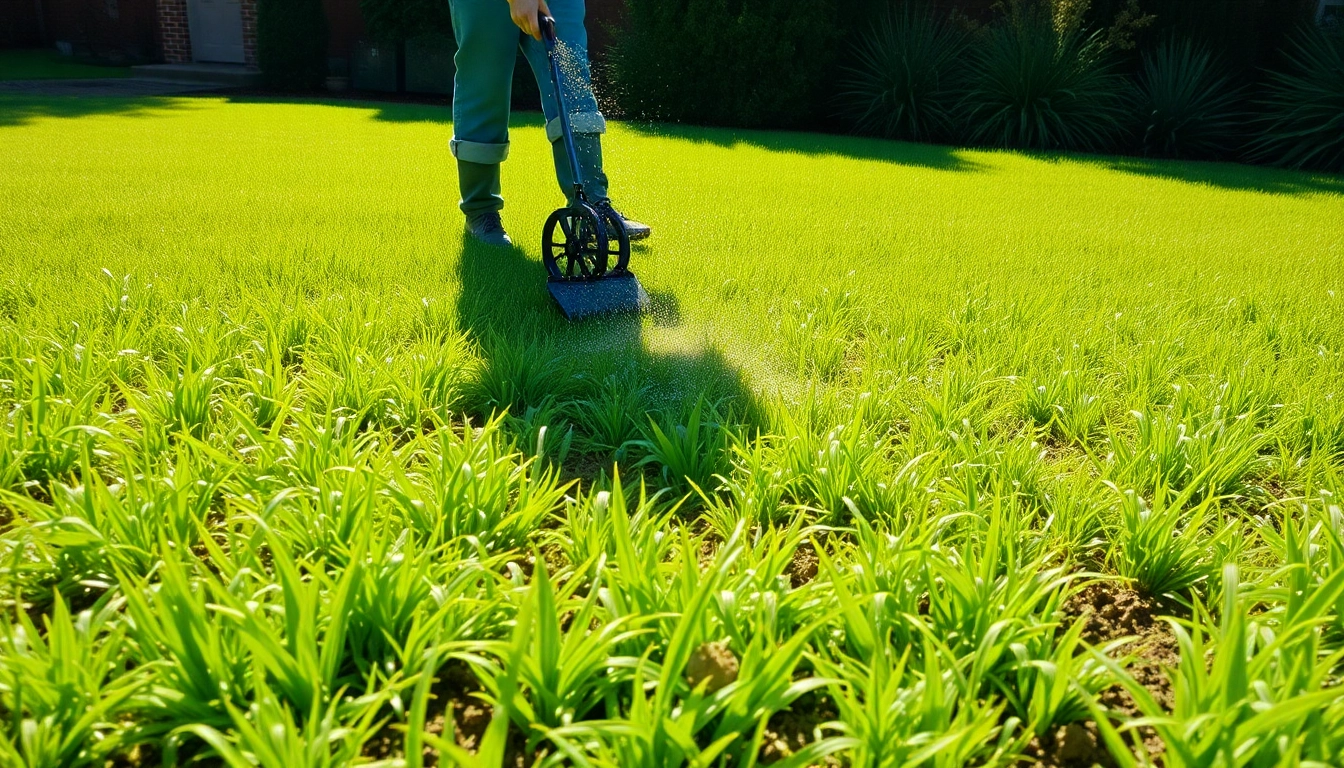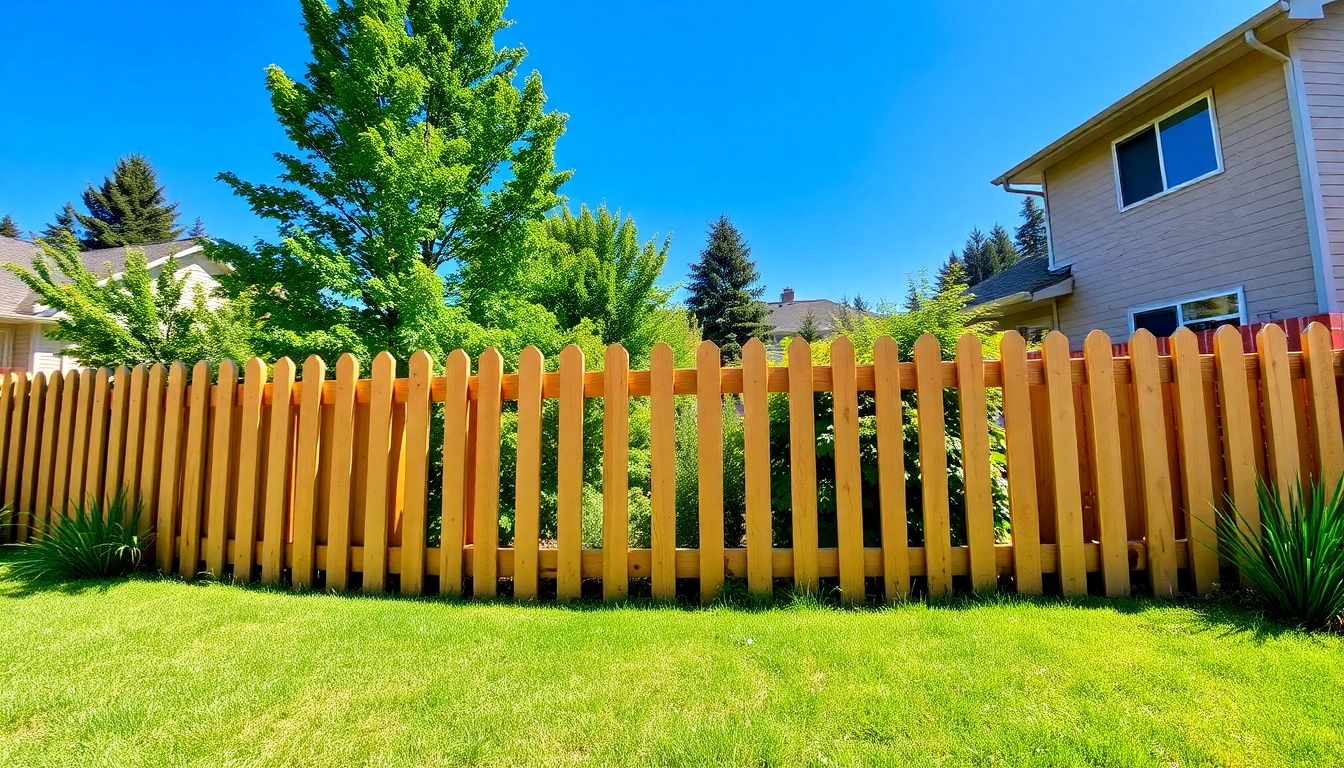Understanding the Basics of Over Seeding
What is Over Seeding?
Overseeding is a lawn care technique that involves spreading grass seed over an existing lawn without tearing up the turf or disturbing the soil. This process is an efficient way to rejuvenate your lawn, fill in bare spots, and improve the overall health of your grass. Unlike traditional seeding, where the ground is often prepared by tilling or turning, overseeding allows for the introduction of new seed varieties to enhance the lawn’s density and resilience.
As an effective lawn maintenance strategy, over seeding serves multiple purposes, including preventing weed growth and promoting a lush, green appearance. This technique is particularly beneficial in areas where the grass has thinned out due to age, drought, or foot traffic.
Benefits of Over Seeding Your Lawn
- Improved Turf Density: By introducing new grass seeds, overseeding increases the overall density of your lawn, making it thicker and more resilient to pests and diseases.
- Enhanced Color and Quality: New seeds often bring variations in grass color and texture which can enhance the visual appeal of your lawn.
- Weed Control: A thicker lawn can help prevent weeds from taking hold, as there is less bare soil for them to germinate and thrive.
- Drought Resistance: Certain grass varieties that are more drought-resistant can be seeded, improving your lawn’s ability to survive in dry conditions.
- Better Soil Quality: The process of overseeding can improve soil health over time by adding organic matter and promoting microbial activity.
Common Misconceptions About Over Seeding
Despite its benefits, there are several misunderstandings surrounding overseeding that can prevent homeowners from utilizing this effective method. One common myth is that overseeding can simply be done anytime without preparation. In fact, successful overseeding requires careful timing and preparation of the lawn. Another misconception is that overseeding can replace the need for regular lawn maintenance practices such as mowing and fertilization, whereas it is intended as a supplemental process within a comprehensive lawn care routine.
When is the Best Time to Over Seed?
Seasonal Considerations for Over Seeding
The timing of overseeding is critical to its success. Late summer to early fall is often regarded as the optimal period for overseeding in many regions. During this time, temperatures are ideal for seed germination and growth, allowing new seedlings to establish before winter. Spring can also be a suitable time, but care must be taken to manage potential competition from existing grasses and weeds during this season.
Weather Impact on Over Seeding Success
Weather conditions play a significant role in the success of overseeding. Ideally, you want to overseed during a period of stable temperatures and adequate moisture. If temperatures are too high, seeds may dry out before germination occurs. Conversely, excessive rain can wash away seeds or create conditions that promote damping-off diseases. Monitoring the weather and planning your overseeding application around favorable conditions will vastly improve your chances of success.
Preparing Your Lawn for Over Seeding
Preparation is a key part of the overseeding process. Start by mowing your existing grass shorter than usual (about 1-2 inches high) to facilitate better seed-to-soil contact. Next, rake the lawn to remove any debris, such as leaves and dead grass, and to loosen the top layer of soil. This process ensures that the new seeds penetrate the soil and establish themselves effectively.
Step-by-Step Guide to Over Seeding
Essential Tools and Materials for Over Seeding
Successfully overseeding your lawn necessitates a few essential tools and materials:
- High-Quality Grass Seed: Choose a seed blend that suits your region and lawn conditions.
- Seed Spreader: A broadcast or drop spreader can help distribute seeds evenly across your lawn.
- Lawn Rake: Useful for prepping the soil and raking in seeds post-application.
- Watering Equipment: A hose or sprinkler system for providing consistent moisture to your newly seeded areas.
Techniques to Effectively Over Seed Your Lawn
Once your lawn is prepared and you’ve gathered your tools, you can begin the overseeding process. Follow these steps:
- Evenly distribute the grass seed using your spreader, ensuring coverage across the entire lawn.
- Lightly rake the lawn to ensure good seed-to-soil contact, preventing seeds from being displaced by wind or weather.
- Water your lawn thoroughly but gently after overseeding to moisten the soil and assist with germination. Maintain consistent moisture for the next few weeks.
Aftercare: Watering and Maintenance Post Over Seeding
After overseeding, proper care is crucial. Watering should be frequent but light to prevent displacing the seeds. Gradually increase the time between waterings as the new grass establishes itself. Refrain from mowing until the new grass is at least 3 inches tall, which is usually around 2-3 weeks after overseeding. Once established, return to a normal mowing schedule.
Choosing the Right Grass Seed for Over Seeding
Types of Grass Seeds for Your Climate
Grass seed selection is paramount for successful overseeding. The right seed type will depend heavily on your local climate. For cool-season areas, Kentucky bluegrass and fescue mixes are common, while warm-season areas often thrive with Bermuda or zoysia grass. Always consider factors such as sunlight, shade, soil type, and foot traffic when choosing your species.
Mixing Grass Seeds: What You Need to Know
Sometimes, a blend of different grass seeds will yield the best results for your lawn. Mixing varieties can enhance drought resistance and adaptability to changing climate conditions. However, be cautious not to select species that may compete with one another or lead to undesirable aesthetic outcomes. Research and consult with local extension services for optimal seed mixes for your area.
Local Resources for Quality Grass Seeds
In your quest for the perfect grass seed, consider reaching out to local gardening centers or agriculture extensions. These resources often provide high-quality, region-specific seeds that have been tested for success in your climate. Furthermore, engaging with local lawn care professionals can yield valuable insights and recommendations tailored to your specific needs.
Measuring the Success of Your Over Seeding Efforts
Signs of Successful Over Seeding
Identifying the success of your overseeding initiative can be determined by several indicators:
- Densification: An increase in grass density and fullness over the weeks following overseeding.
- Color Variation: A uniform green appearance across the lawn that indicates healthy growth.
- Weed Suppression: A notable decrease in the presence of weeds suggests that the new grass is establishing well.
Common Issues and How to Address Them
While overseeding can lead to many positive outcomes, it also comes with potential challenges. Here are some common issues and solutions:
- Inadequate Germination: If seeds do not germinate well, ensure that they had proper soil contact and were watered correctly. A second overseeding may be necessary.
- Competition from Weeds: If weeds outcompete the new grass, consider applying a selective herbicide after the new grass is healthy to manage the problem.
- Pest Issues: Regular monitoring for pests can help prevent serious problems. Utilize bio-friendly pest management solutions when necessary.
Long-Term Lawn Care After Over Seeding
To maintain the health of your lawn post-overseeding, get back onto a regular lawn care routine. This includes regular watering, fertilization, and mowing. Use a balanced fertilizer to provide nutrients, and mow regularly to train the grass to grow thick and healthy. Regularly evaluate the condition of your lawn and make adjustments to your practices based on environmental changes or observed issues.



